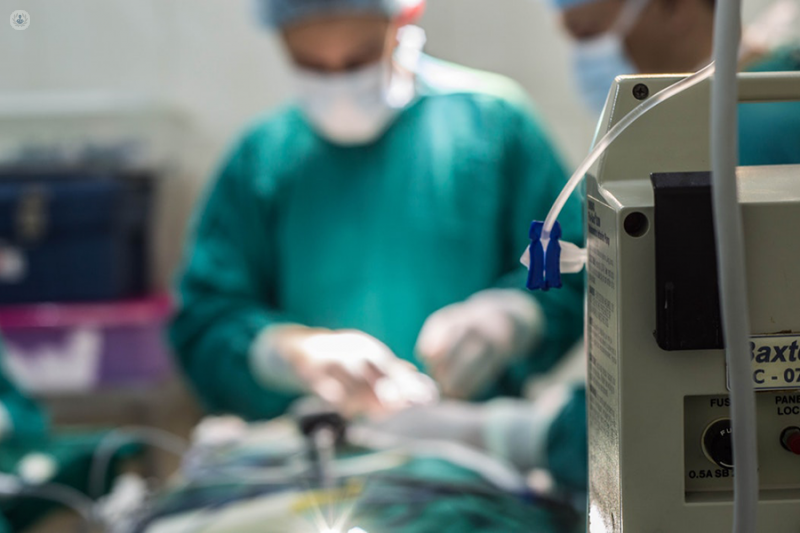Selective laser trabeculoplasty (SLT): your questions answered
Escrito por:Who is it for? How can it help with glaucoma? What can I expect from the procedure? And are there any risks? We asked consultant ophthalmologist Mr Suman Biswas, specialist in glaucoma surgery.

What is selective laser trabeculoplasty (SLT)?
Selective laser trabeculoplasty (SLT) is a procedure used to reduce pressure in the eye.
Your eye contains a drainage system that normally allows the fluid in the front compartment of the eye to drain away to channels in the wall of the eye. If this system doesn’t work, fluid can build up in your eye and cause increased pressure. Eventually this can damage the optic nerve and impair your vision. The peripheral field of vision is affected initially, with the central vision being the last to be damaged irreversibly. This is known as glaucoma.
The SLT is a laser procedure which helps to unclog the drainage channels and helps the fluid flow through them better.
Who is it suitable for?
There are many treatments for glaucoma and the right treatment option depends on what type and stage of glaucoma you have. SLT is suitable for patients with open-angle glaucoma, pseudoexfoliation, or pigmentary glaucoma as well as ocular hypertension (which is the stage when the pressure is high, but glaucomatous damage has not yet started), and is particularly suitable if the glaucoma is in its early stages.
In many patients, glaucoma is initially treated with medication in the form of eyedrops. For some people, medication is not successful at reducing the pressure in their eye or they are intolerant to various eyedrops, while others would prefer to reduce the medication they are taking. SLT is a flexible treatment option that can be used in combination with or as an alternative to medication.
Finally, SLT is useful if you are unable to commit to regular follow-up visits due to lack of transportation or other limitations.
Why should I have SLT?
Just like with other glaucoma treatments, SLT cannot restore any sight you have already lost – instead, the aim is to prevent further sight loss. Furthermore, SLT can reduce the number of eye drops you currently use.
Compared to other forms of surgery, SLT is less invasive, and can be repeated as many times as required.
What is it like to have the procedure?
The procedure is painless and you should only be in the clinic for about two hours. You can eat and drink before the procedure, and it’s important to take your usual medication on the day of the treatment.
In the treatment room you’ll receive some eye drops to make the pupil smaller and some anaesthetic drops. The doctor will put in a contact lens, then will carry out the treatment with a machine very similar to the ones opticians use to conduct eye exams. The doctor will spend about 10-15 minutes treating each eye. You’ll be sat down for the whole procedure.
After the operation you might have mild discomfort for a few hours, but you should be able to drive and work the next day. Your doctor will follow up with an examination to determine the extent of pressure-lowering, and modify treatment subsequently.
What is the success rate?
SLT is successful in about 80% of cases. It will take up to six weeks to know whether treatment has been successful. If it hasn’t been successful, your doctor will discuss other options with you, including medication or other forms of surgery.
The effects of SLT will wear off over time - generally, about half of treatments stop working after five years – but the good news is that it is always possible to go back for repeat treatments.
Are there any risks?
SLT is generally a safe procedure and has been practised for about a decade in the USA. The chances of permanent eye damage from the procedure are extremely small.
Any complication after surgery, such as temporarily increased pressure in the eye, are likely to be mild – and you will be given eye drops to help prevent these problems. You may also experience blurred vision, headache, inflammation, or eye pain lasting a few hours, usually alleviated by analgesic tablets. If you still have these symptoms after 2-3 days, you should seek medical advice.


